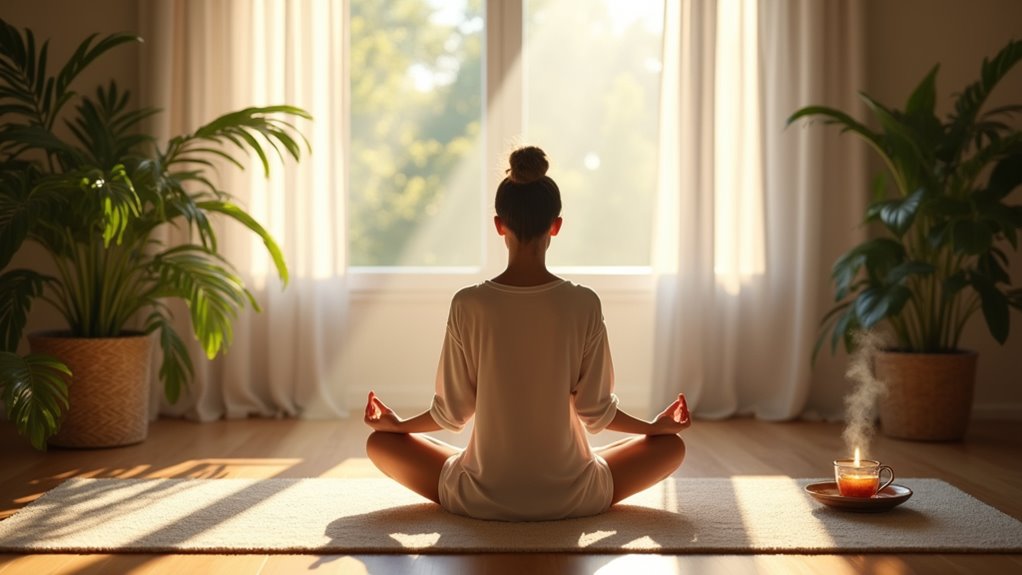Starting your day with a morning meditation can set a positive tone. By dedicating just 10 minutes to this practice, you can cultivate a calm mind and enhance your focus. Imagine finding a quiet space, settling in comfortably, and tuning into your breath. This simple routine invites peace and clarity into your day, but how exactly do you create the right environment and mindset for such a practice? Let’s explore the essential steps together.
The Importance of Morning Meditation
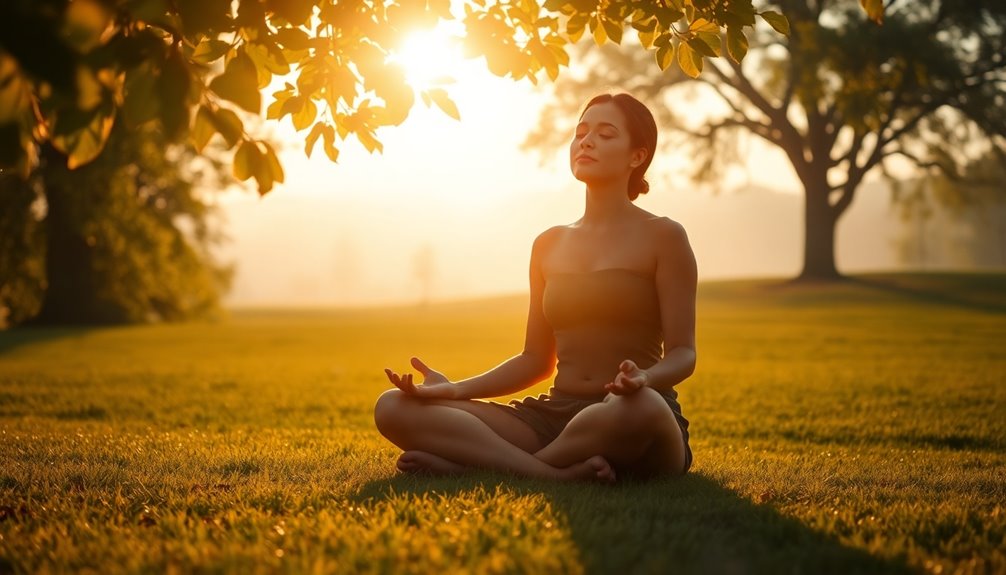
When you begin your day with morning meditation, you set a positive tone that can significantly impact your mindset.
This simple practice helps clear your thoughts and fosters a sense of calmness, making you more resilient to daily challenges. By dedicating just a few minutes to focus inward, you create space for self-reflection and mindfulness.
This clarity enhances your decision-making and boosts your emotional well-being. You’re likely to notice increased productivity and a greater ability to stay present throughout the day.
Morning meditation also cultivates gratitude, allowing you to appreciate the little things.
Ultimately, making this practice a part of your routine can transform not only your mornings but also your overall outlook on life.
Preparing Your Space for Meditation
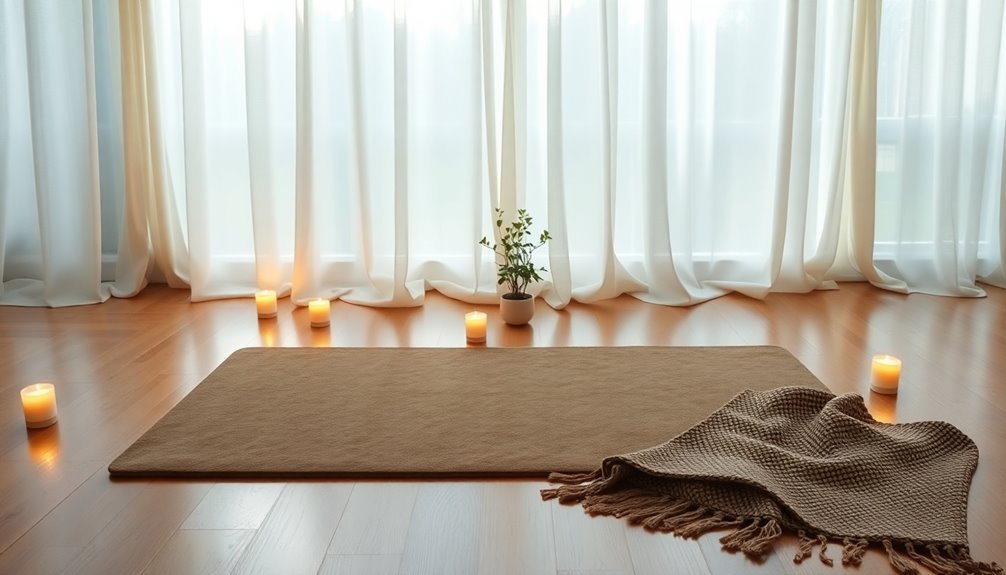
To create an inviting meditation space, you should consider both the physical environment and the energy it holds. Start by choosing a quiet spot where you won’t be disturbed. Clear away clutter and distractions to foster a sense of calm.
If possible, incorporate natural elements like plants, which can enhance the atmosphere. Soft lighting, such as candles or dimmable lamps, helps set a peaceful mood.
You might also want to add cushions or blankets for comfort. Consider using calming scents, like lavender or sandalwood, through essential oils or incense.
Finally, play gentle background music or nature sounds if you find it soothing. By thoughtfully preparing your space, you’ll create an environment conducive to deeper meditation and relaxation.
Finding a Comfortable Position
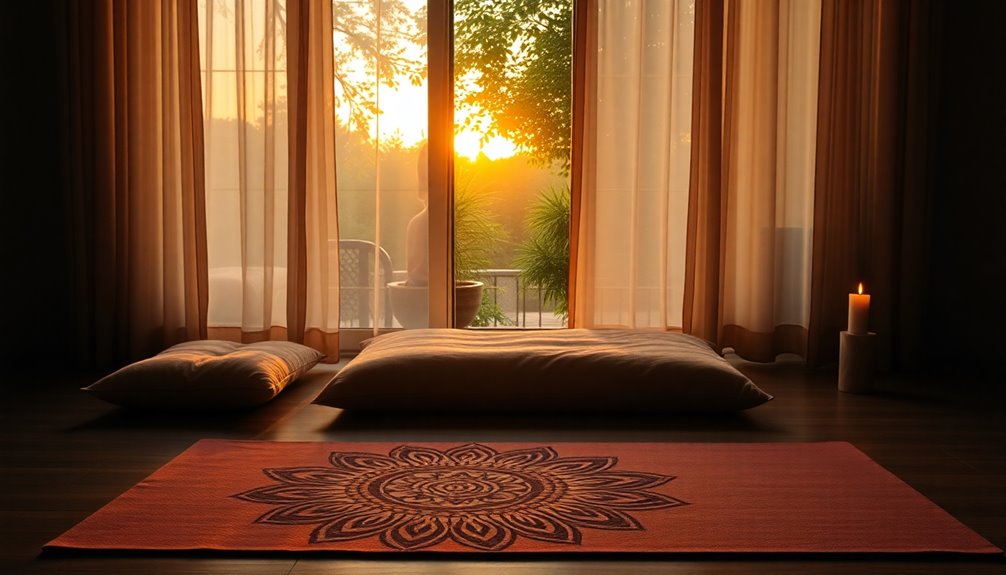
As you settle into your meditation practice, finding a comfortable position is essential for maintaining focus and relaxation.
You can sit on a cushion, chair, or even lie down if that feels better. Make sure your back is straight but not rigid, allowing your body to feel supported.
Rest your hands on your knees or in your lap, palms facing up or down, whichever feels right for you. Close your eyes gently or keep a soft gaze ahead.
If you prefer to stand, ensure your feet are hip-width apart for stability.
Focusing on Your Breath

Breath is a powerful anchor in your meditation practice, guiding you back to the present moment.
As you settle into your comfortable position, bring your awareness to your breath. Notice the rhythm of inhaling and exhaling. Feel the air fill your lungs and the gentle release as you exhale.
If your mind starts to wander, gently redirect your focus back to your breath. Count each inhale and exhale if it helps maintain your concentration.
This simple act of focusing on your breath cultivates a sense of calm and clarity. Embrace each breath as an opportunity to ground yourself, letting go of distractions.
With practice, your breath will become your trusted companion, enhancing your meditation experience and fostering a tranquil mind.
Guided Visualization Techniques
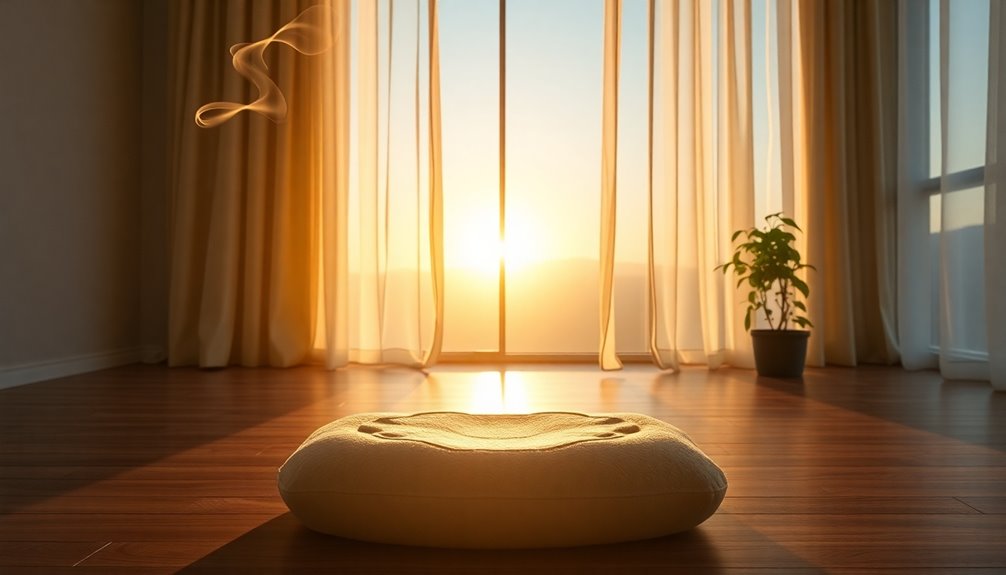
Once you’ve established a steady focus on your breath, you can enhance your meditation practice through guided visualization techniques.
Picture a serene landscape, like a quiet beach or a tranquil forest. As you visualize, engage all your senses—feel the warmth of the sun, hear the gentle waves, or smell the fresh pine. This mental imagery not only deepens your relaxation but also helps you connect with your inner peace.
If thoughts wander, gently guide them back to your visualization. You might also use specific scenarios, such as envisioning a successful day ahead or letting go of stress.
These techniques can ground you, providing clarity and calmness that lingers long after your session ends. Embrace the journey within.
Cultivating Gratitude

While you navigate your morning meditation, cultivating gratitude can significantly enhance your sense of calm.
Take a moment to reflect on the positives in your life. Begin by acknowledging the small things—a warm cup of coffee, a friendly smile, or the beauty of nature. These moments can ground you in appreciation.
As you breathe deeply, visualize each breath filling you with gratitude, expanding your heart. Allow feelings of thankfulness to wash over you, pushing aside negativity and stress.
You might even consider keeping a gratitude journal, jotting down three things you’re thankful for each day. This simple practice can shift your mindset, fostering a more peaceful and centered state as you move through your day.
Grounding Yourself in the Present Moment
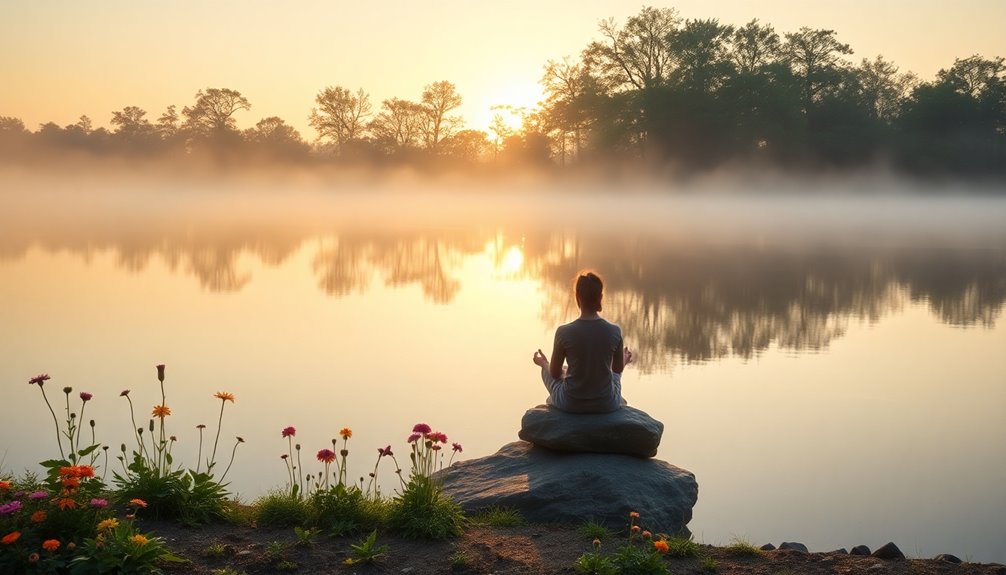
As you settle into your morning meditation, grounding yourself in the present moment is crucial for cultivating a calm mind.
Focus on your breath; notice the rise and fall of your chest, the cool air entering your nostrils. Feel the texture of the surface beneath you, anchoring your awareness.
If thoughts wander, gently bring your attention back to your breath or the sensations around you. Acknowledge any distractions without judgment, then let them drift away.
Visualize roots extending from your body into the earth, connecting you to stability and strength. Embrace the stillness, allowing it to fill you with peace.
In this moment, you’re exactly where you need to be, fostering a sense of calm that can carry you through your day.
Integrating Mindfulness Throughout Your Day

To cultivate mindfulness throughout your day, it’s essential to weave small moments of awareness into your routine.
Start by taking a few deep breaths before you get out of bed, setting a mindful tone for the day. During meals, focus on the flavors and textures of your food rather than distractions.
When you walk, notice each step and the sensations in your body. Incorporate short breaks to check in with your thoughts and feelings, allowing yourself to pause and breathe.
Even routine tasks like washing dishes or showering can become mindful moments by paying full attention to the experience.
Reflecting on Your Experience
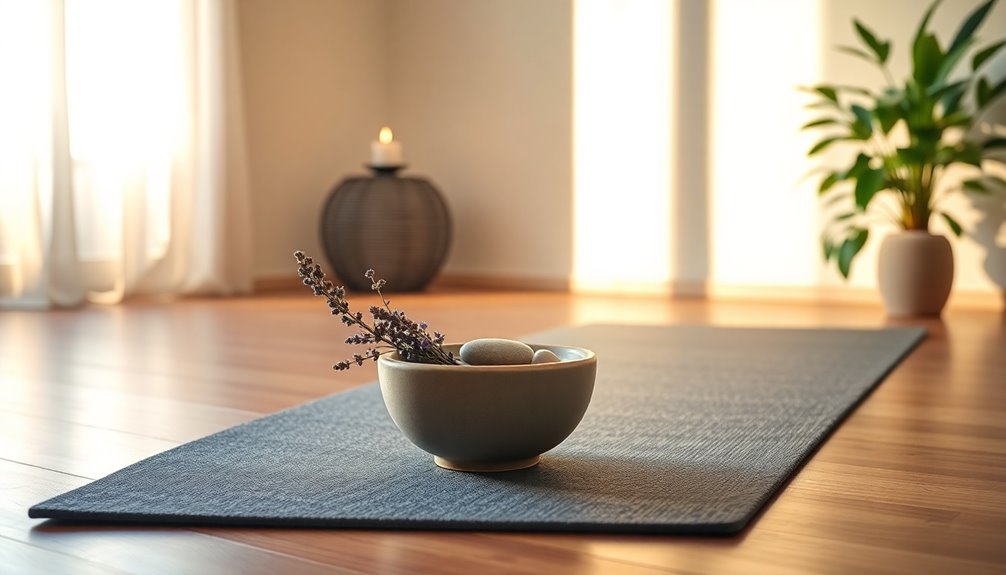
Reflecting on your experiences is a powerful way to deepen your mindfulness practice. After your meditation session, take a moment to consider how you felt during the practice. What emotions surfaced? Did any thoughts distract you? Acknowledge these feelings without judgment.
This reflection helps you understand your mind’s patterns and enhances self-awareness. You might want to jot down your thoughts in a journal. Writing can clarify your insights and reinforce your commitment to mindfulness.
As you review your reflections over time, you’ll notice growth and changes in your mindset. Remember, it’s not about achieving perfection; it’s about being present and learning from each experience. Embrace this journey, and allow your reflections to guide you toward a calmer, more centered state.
Conclusion
As you wrap up your 10-minute morning meditation, take a moment to acknowledge the calmness you’ve cultivated. Carry this tranquility with you throughout your day, using it as a foundation for mindfulness in every moment. Remember, it’s about consistently returning to your breath and embracing gratitude. With each practice, you’ll strengthen your ability to remain grounded, centered, and aware. Embrace the clarity you’ve gained, and let it guide you through whatever challenges lie ahead.
